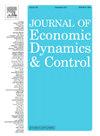前瞻性出口商
IF 2.3
3区 经济学
Q2 ECONOMICS
引用次数: 0
摘要
我们研究了预期在推动出口调整中的作用。我们利用双边汇率数据、汇率预测和一组国家的hs2产品出口数据表明,对汇率变化的预期是预期出口调整的重要渠道。在我们首选的规范中,预期的汇率贬值会导致新出口商大量进入(广泛的边际调整),对总出口量或密集边际没有显著影响。我们建立了一个具有异质企业的简单模型,为这些发现提供直觉,并讨论预期行为如何影响贸易弹性测量。本文章由计算机程序翻译,如有差异,请以英文原文为准。
Forward looking exporters
We study the role of expectations in driving export adjustment. Using bilateral data on exchange rates, exchange rate forecasts, and HS2-product export data for a panel of countries, we show that expectations of exchange rate changes are an important channel for anticipatory export adjustment. In our preferred specification, an expected exchange rate depreciation induces substantial entry of new exporters (extensive margin adjustment), with no significant effect on total export volumes or the intensive margin. We develop a simple model with heterogeneous firms to provide intuition for these findings and discuss how anticipation behavior may affect trade elasticity measurement.
求助全文
通过发布文献求助,成功后即可免费获取论文全文。
去求助
来源期刊

Journal of Economic Dynamics & Control
ECONOMICS-
CiteScore
3.10
自引率
10.50%
发文量
199
期刊介绍:
The journal provides an outlet for publication of research concerning all theoretical and empirical aspects of economic dynamics and control as well as the development and use of computational methods in economics and finance. Contributions regarding computational methods may include, but are not restricted to, artificial intelligence, databases, decision support systems, genetic algorithms, modelling languages, neural networks, numerical algorithms for optimization, control and equilibria, parallel computing and qualitative reasoning.
 求助内容:
求助内容: 应助结果提醒方式:
应助结果提醒方式:


